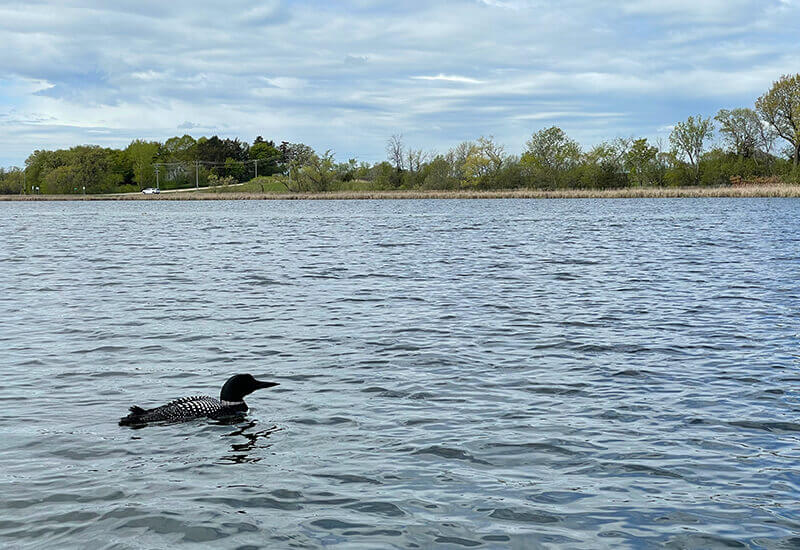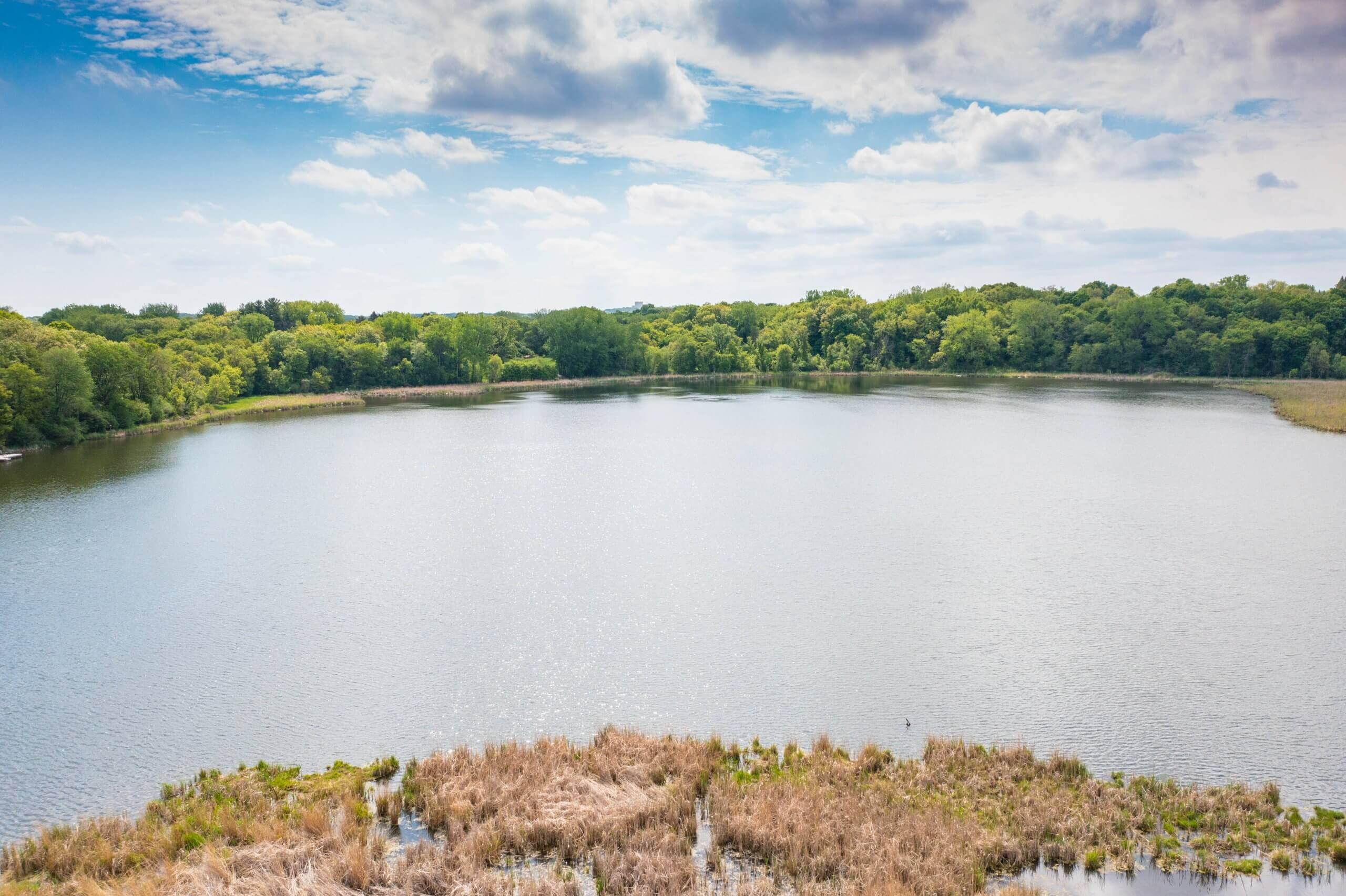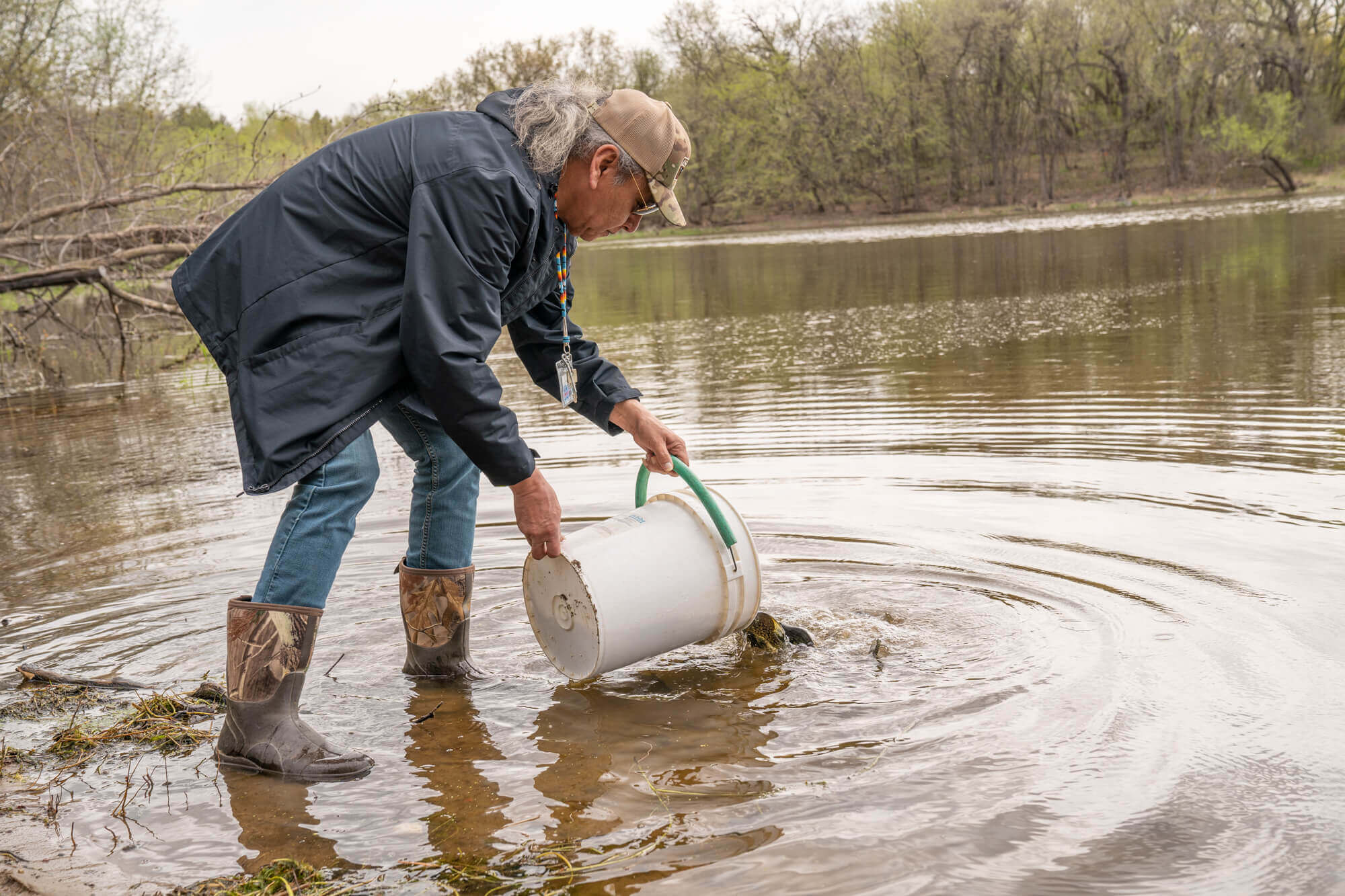At the Shakopee Mdewakanton Sioux Community, waters are culturally significant and important for aquatic life, mitigation, and recreation. SMSC lands are perched above the Minnesota River at the top of the local watershed. With this location comes a responsibility to protect the quality of our waters as they reside on our lands and as they flow downstream through our neighboring communities. Lakes are monitored for water quality, lake depth/bathymetry, water level, aquatic vegetation and fish assessments.


Arctic Lake Restoration
The SMSC regularly works with local, state, and federal governments, and community groups such as lake associations, and many other water stakeholders on mutually beneficial projects, such as the restoration and improvement of Arctic Lake.
This project included the installation of an iron-enhanced sand filter, drainage and storage enhancements, and planting a prairie buffer. This collaborative work helps build a better community for all.
Arctic Lake Round View
Pike Lake Restoration
One of the challenges is the presence of invasive common carp, which impacts water quality by disrupting the lake bottom, uprooting aquatic vegetation, and releasing nutrients into the water column. During carp removal in February 2021, it was discovered that Pike Lake suffered significant winter kill due to lake of oxygen in the water.

While the winter kill reduced the carp population, it also decimated the once-thriving bluegill, crappie, and bass populations.
To help restore the fish population to healthy levels, the SMSC has released 8,500 bluegill, 3,750 yellow perch, and 1,000 black crappie into the lake. Bluegill is a native predator of common carp eggs and naturally controls the population of this invasive species. The SMSC continues to survey the fishery to help keep the lake’s ecosystem balanced and healthy.
